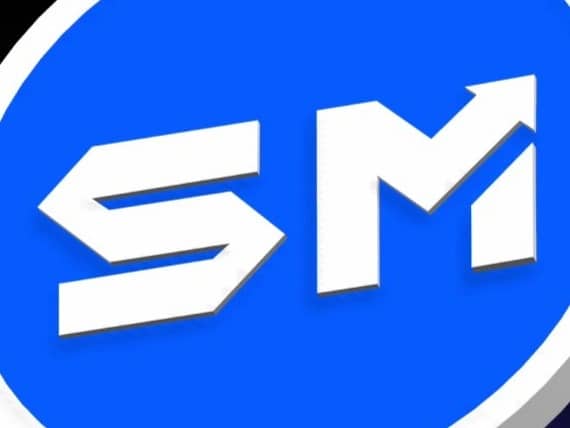订阅 wiki
Share wiki
Bookmark
Smart Meta
Smart Meta
Smart Meta 是一个基于区块链的平台,旨在代币化现实世界资产(RWA),目标是提高投资的可访问性和流动性。该项目旨在通过将链下资产整合到去中心化金融框架中,创建一个RWA投资生态系统。[1] [2]
概述
Smart Meta的开发旨在解决传统资产市场中存在的结构性限制,例如高价值资产的低流动性、散户投资者的大量准入壁垒、信息不对称和漫长的结算周期。该平台的核心策略包括将这些物理和金融资产数字化转型为基于区块链的代币。[1] [3] [4]
这个过程被称为代币化,旨在促进部分所有权,允许投资者购买传统上不可分割的资产中更小、更实惠的份额。该平台的架构旨在利用智能合约来自动化关键流程,如交易结算和利润分配,从而旨在减少运营开销并提高效率。该项目的一个核心原则是向所有参与者提供关于底层资产的透明的链上数据。Smart Meta的长期愿景包括全球扩张,通过开发专有的主网和一个附属的稳定币来支持,以构建该项目所谓的“元经济”。[1] [2]
产品
Smart Meta生态系统的核心产品是其RWA投资平台,该平台旨在管理从入职和验证到投资管理和退出的整个用户旅程。该平台旨在作为用户与代币化现实世界资产交互的主要界面。[1]
该平台的一个关键组成部分是计划中的质押模块。此功能将允许用户锁定其原生SM代币以赚取奖励,这些奖励来自平台管理的底层资产组合的利润。除了质押之外,该项目的路线图还包括开发RWA交换功能。此功能旨在允许用户直接在生态系统内交易不同的代币化资产,创建内部市场并为RWA提供流动性。该项目还计划推出一种原生稳定币,名为$SMD,它将集成到该平台的金融基础设施中。[1] [4]
主要特点
代币化和部分所有权
该平台的主要特点是现实世界资产的代币化,它将资产的合法所有权转换为记录在区块链上的数字代币。这个过程是该项目提高市场可访问性目标的基础。通过创建资产的数字表示,Smart Meta实现了部分所有权,允许投资者购买和交易高价值资产(如商业房地产或私募股权)的小百分比,否则由于高资本要求,他们将无法获得这些资产。[1]
自动化资产管理
该平台架构严重依赖智能合约来自动化和执行投资和资产管理的规则。这些自动执行的合约旨在处理诸如将底层资产产生的利润分配给代币持有者,以及结算平台上计划的交换功能的交易等流程。[2]
链上透明度和数据完整性
为了解决信息不对称的问题,Smart Meta计划提供链上数据透明度。所有交易、所有权记录和利润分配都记录在区块链上,创建了一个所有参与者都可以访问的不可变且可审计的账本。为了确保将链下资产价值链接到其链上表示的数据的完整性和准确性,该项目计划利用预言机和零知识(ZK)证明。这些技术旨在提供可验证的资产所有权和价值证明,而无需泄露敏感的底层数据。[1] [2]
生态系统与架构
Smart Meta的生态系统围绕五个主要组件构建,旨在将现实世界资产(RWA)与基于区块链的系统连接起来。
RWA金库: 作为现实世界资产(如房地产和债券)的存储库,这些资产在链下持有,并通过代币化表示在链上镜像。
SM代币: 作为平台的核心实用程序和价值关联代币,将数字资产与其底层物理资产基础连接起来。
交换引擎: 实现数字资产和RWA支持的代币之间的自动交换,保持流动性并促进资产转换。
质押和奖励池: 作为一种分配机制,根据活动和贡献将奖励分配给流动性提供者和生态系统参与者。
预言机层: 通过中继市场数据、资产估值和外部信息,在链上和链下环境之间提供安全的数据桥梁,以确保透明度和准确性。[1] [6]
用例
- 投资于高价值现实世界资产(如房地产、证券和私募股权)的部分股份。
- 通过质押SM代币并获得平台资产管理活动产生的利润份额来赚取被动收入。
- 通过计划中的去中心化自治组织(DAO)参与平台治理,提出并投票决定关键决策。
- 将SM代币用作未来$SMD稳定币和生态系统中其他潜在DeFi应用的抵押品。
- 在平台上计划的内部交换功能上交易不同的代币化现实世界资产,为传统上缺乏流动性的资产提供流动性来源。[1] [2]
路线图
- 2025年第二季度: 建立初始资产类别,如房地产和债券,完成法律结构和托管协议,并最终确定白皮书和代币经济学框架。
- 2025年第三季度: 发布MVP原型以及智能合约模块开发、预言机集成测试以及启动私人销售。
- 2025年第四季度: 发行SM代币(ERC-20),初始流通量为10%,启动公开销售(IEO/IDO),推出质押模块,并宣布战略合作伙伴关系。
- 2026年第一季度: 在中心化和去中心化交易所上市,激活RWA交换功能,发布DAO投票的测试版,并完善奖励结构。
- 2026年第二季度至第三季度: 将现实世界资产(RWA)池扩展到约3000亿韩元,开发专有主网和$SMD结构,并扩展DAO运营。
- 2026年第四季度: 推出带有$SMD发行的主网,集成链上支付功能,并将治理权限逐步转移到DAO。
- 2027年及以后: 全球集成RWA,通过IBC和LayerZero建立互操作性,并完全过渡到DAO主导的治理。[1]
代币经济学
Smart Meta生态系统的原生实用程序和治理代币是$SM代币,总供应量为1,000,000,000个代币。它被设计为平台运营不可或缺的价值支持的数字资产。$SM代币的总供应量上限为10亿。[1]
分配
- 生态系统: 30%
- 质押: 20%
- 私人销售: 15%
- 团队: 15%
- 公开销售: 10%
- 国库: 10%[1]
代币实用程序
- 价值存储: 该代币旨在作为一种价值存储,由平台的现实世界资产组合支持。
- 质押和奖励: 它使用户能够质押他们的代币以帮助保护网络,并作为回报,获得平台资产管理活动产生的利润的一部分。
- 治理: 该代币授予参与权和投票权在Smart Meta DAO中,允许持有者影响平台的发展和经济政策。
- 抵押品: 计划将其用作铸造未来$SMD 稳定币的主要抵押资产。[1] [2]
治理
Smart Meta平台的治理旨在由去中心化自治组织(DAO)管理。SM代币的持有者将有权提出和投票决定影响生态系统的关键决策。这些决策可能包括对经济政策的更改,例如实施代币回购和销毁计划、管理国库以及分配资金用于新的资产收购。该项目的路线图表明,权力将从核心团队逐步过渡到DAO,最终目标是实现对平台的完全社区主导的治理。[1]
发现错误了吗?
